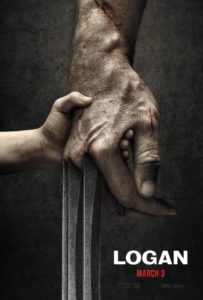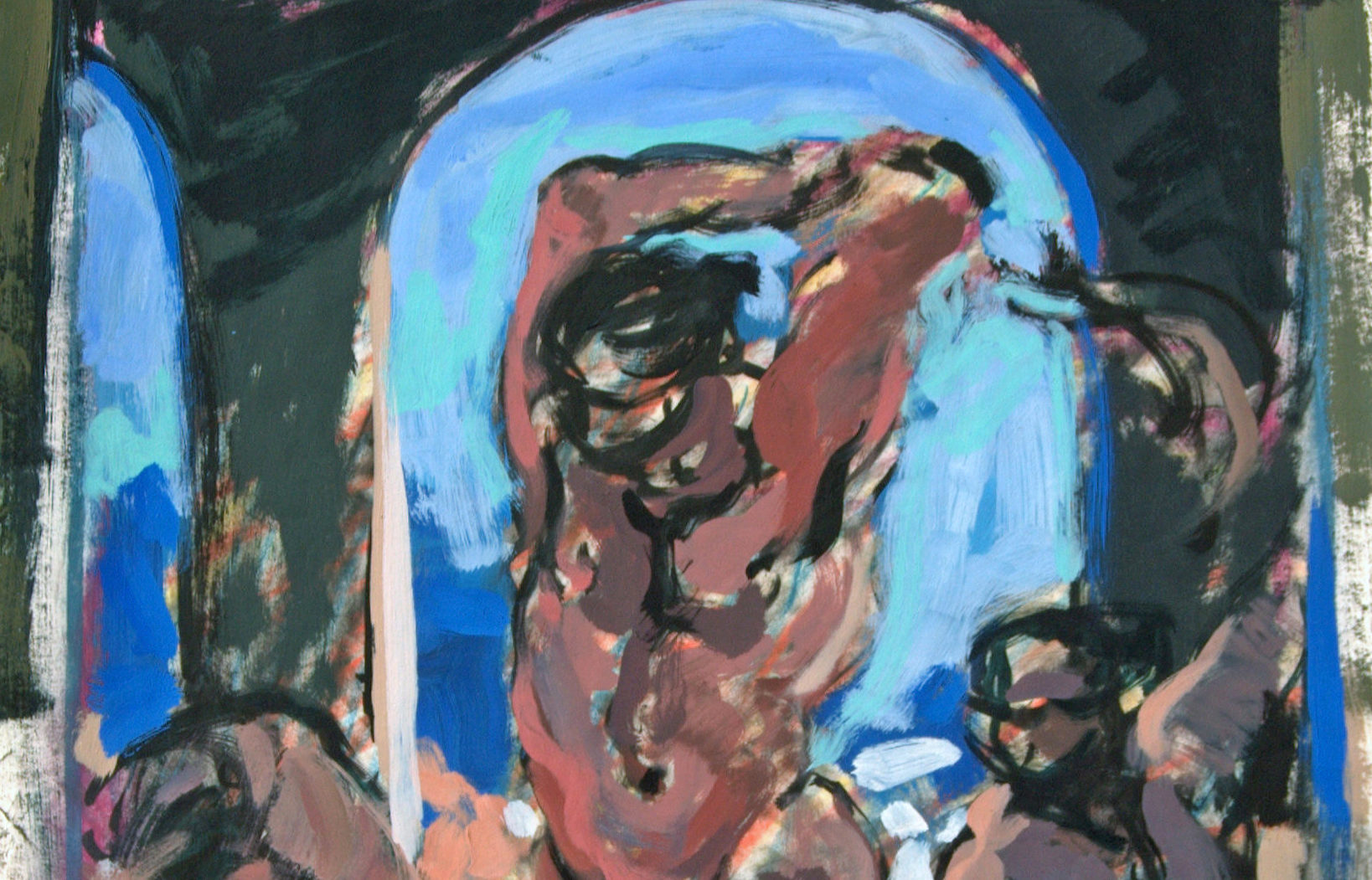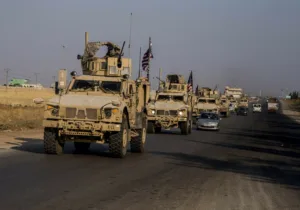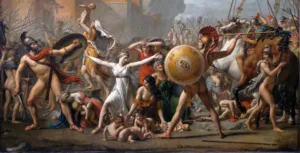While knowing little about the deep history of the Wolverine universe, the X-Man’s two earlier solo films, or comic book adaptations generally, I can nevertheless appreciate that James Mangold’s Logan breaks the mold of the preceding Wolverine films and resets the standards for superhero flicks more broadly. To grasp that much, familiarity isn’t essential. Mangold, and Hugh Jackman—playing the eponymous hero—have made clear that Logan was inspired by several of the great Western films—particularly Unforgiven, The Cowboys, and Shane.
 The latter, George Stevens’ 1953 adaptation of a better book by the same name, actually has a cameo in Logan; and is viewed and discussed by two of Logan’s principle characters. It’s a fitting means by which to find our feet. As in Shane, when Alan Ladd rides into a small Wyoming town, all we need to know about Logan the person can be acquired early on. Both men follow the Western’s basic conventions. While we might not know the details, it’s clear each has lived a life intimate with violence, and that, however good they were at it, they are now trying to leave that life behind and to settle into something rather less kinetic, bloody, and ugly.
The latter, George Stevens’ 1953 adaptation of a better book by the same name, actually has a cameo in Logan; and is viewed and discussed by two of Logan’s principle characters. It’s a fitting means by which to find our feet. As in Shane, when Alan Ladd rides into a small Wyoming town, all we need to know about Logan the person can be acquired early on. Both men follow the Western’s basic conventions. While we might not know the details, it’s clear each has lived a life intimate with violence, and that, however good they were at it, they are now trying to leave that life behind and to settle into something rather less kinetic, bloody, and ugly.
In Logan, time and mortality have caught up. Logan is harboring an ailing, nonagenarian Dr. X—simply called Charles now—whose profound telepathic powers are increasingly compromised by a neurodegenerative disorder. Regarding Logan, Mangold writes: “As for our hero, well, he’s older now and it’s clear his abilities ain’t what they once were. He’s fading on the inside and his diminished healing factor keeps him in a constant state of chronic pain—hence booze as a painkiller.” Having abandoned his superhero vocation, Logan is intent only on scraping together enough money to purchase a boat so that he and Charles can leave their lives behind. As in any great Western, no such retreat is ever going to happen.
Into Logan’s life comes Laura—an eleven-year-old mutant-clone with the same recuperative powers, enhanced speed and strength, and retractable adamantium claws as Logan. She too is on the run, attempting to outpace a weapons program conglomerate who have created her to be a soldier. She too is seeking a paradise, a rumor found in a comic book of a place in the north called “Eden”. Logan, with Charles serving a bit like his conscience, ultimately agrees to shepherd her, despite his doubts that Eden even exists. They are chased along the way by the malevolent Dr. Rice and his cyborg mercenaries.
Logan’s retirement plans are thereby suspended. It is as it must be. As Shane laments to a little boy who revers him, “A man has to be what he is. You can’t break the mold.” For Shane and Logan, what they “have to be” are men of violence. But two crucial points follow.
First, in neither Shane nor Logan is the violence celebrated. In what is presented as a page from the Logan shooting script, Mangold warns, “If you’re on the make for a hyper choreographed, gravity defying, city-block destroying, CG f**kathon, this ain’t your movie.” Instead, against carnage-as-entertainment, a central meditation of Logan is about the price that violence exacts—not just on those who suffer it, but also, and especially, on those who inflict it. “There’s no going back from the killing,” rues Shane, articulating a theme that runs throughout Logan. “Right or wrong it’s a brand, and the brand sticks.”
Secondly, Logan never suggests that the violence, even for those made in violent molds, is pre-determined. Rather, Logan inhabits a universe in which choices matter, and in which evildoers have a say in shaping them. Throughout the film, Logan tries to avoid the fight, indeed so much so that he is willing to abandon basic responsibilities. At one point, Logan initially refuses Charles’ demand that they stop and help a family in need. “Someone will turn up,” Logan insists, trying to justify his desire to drive on. Charles quietly counters, “Someone has turned up.” Logan concedes. They pull over and they help.
Having done so, the film’s central sequence now unfolds. Charles, Logan, and Laura are invited back to the family’s home for supper. It becomes quickly evident that this is a Christian family. Religious imagery abounds: grace is offered, a cross is prominent in the background over Logan’s shoulder and at the woman’s throat, homecooked food becomes a holy meal. Soon everyone is laughing and sharing stories like old friends. At the evening’s conclusion, having agreed to stay the night, Logan is helping Charles into bed when the old man whispers, “This is the most perfect night I’ve enjoyed in a very long time.”
Rumors of Eden are at the film’s heart. Logan believes he can find it on a boat out to sea, Laura searches for it somewhere north, and in their own perverse way Dr. Rice thinks he can manufacture it through homegrown killing machines. But Charles finds it first, in the simple joys of a family. With Laura sleeping quietly on the floor beside his bed, Charles tells Logan, “This is what life looks like. People who love each other, a home. You should take a moment. Feel it. You still have time.” The final revelation of a dying man, it is a tender, delicate, serenely beautiful reprieve from all the mayhem.
Taken together, these two ideas about violence point to core aspects of Christian thinking about the use of force. Force is always only the form love takes against terrible evil in the last resort when nothing else will protect the innocent, restore justice, and bring about the conditions for peace. By the film’s end, Logan will have taught Laura, and learned himself, the old Chesterton nugget that “The true soldier fights not because he hates what is in front of him, but because he loves what is behind him.”
By championing such platitudes, Logan suggests Dr. Rice is wrong in his own reflection on why mutants like Laura resisted efforts to train them to be pure killers. “You can’t nurture rage,” he muses. Not true. Logan, and the Westerns that helped inspire it, suggest that violence—force—can in fact be nurtured. We can learn to be angry at the right things and act accordingly. Moreover, such films further insist that love, too, can—and must—be nurtured. Logan’s greatest trial is growing willing to love, despite all the associated risks of heartbreak and loss. In bringing violence and love together, such films follow the just war tradition’s chivalric grounding. Chivalry moulded men into composite beings: ferocious to nth degree, and gentle to the nth degree—each manifest in its proper time and, in proper proportions sometimes very hard to see, always qualified by the other.
Logan sugarcoats nothing. But for those with the eyes to see beyond the superhero, it has much to commend regarding the truth and beauty of the Christian witness. Chief among these commendations is the reminder that violence, when catalyzed—and limited—by love for the sake of love, can sometimes be the only thing able to bring about the defeat of evil and provide the conditions for peace. More profoundly, Logan corrects much contemporary Christian misunderstanding regarding self-sacrifice. To be sure, Logan gives his life for the sake of others—this is the kind of sacrifice with which we’re most comfortable. But prior to this, circumstances required that he first had to accept another kind of self-sacrifice—that of shouldering the burden of being a man of violence, despite the peril that being so can wreck on the human soul. Logan’s giving of his life occurs in the context of a fight made necessary by the requirements of justice and love. None of this should be unfamiliar to those who have read a book about a God who flips over tables and who hung on cross.
Before she begins the final leg on her way to Eden, Laura pauses at Logan’s gravesite and uproots the cross placed over it. She turns it to its side and embeds it that way into the soft earth. Of course, on the one hand, the action turns the cross into an “X”—as in X-Men, right? But the image plays out at another level as well. In many services across the Christian landscape this Easter, Sunday morning churchgoers will find the cross uprooted—tiled onto its side and resting on the ground. Such a cross reminds us that the crucifixion is past, He is risen indeed, the work is done. Christ’s redemptive work, hot on the heels of extraordinary violence, does nothing to celebrate the violence. But it does celebrate the fact that one Person was willing to endure it for others. And, perhaps, it notes, with trembling, that another Person was willing to employ it for those same others as well.
As life fades from Logan’s eyes, he takes the time to lock them onto Laura’s. “So this is what it feels like,” he says, with evident joy, before passing. Charles would be pleased. It’s sentiment to be sure—but it isn’t sentimental, because it’s real. Taking all its platitudes together, Logan’s final lesson, to a cynical age no less, might be this: just because something is found in a book, it doesn’t mean it’s not true. Tetelestai!
—
Marc LiVecche is the managing editor of Providence
Images courtesy of 20th Century Fox. Visit the Official Logan site at: http://www.foxmovies.com/movies/logan







 Live in the DC area? Sign-up for Providence's in-person events list!
Live in the DC area? Sign-up for Providence's in-person events list!